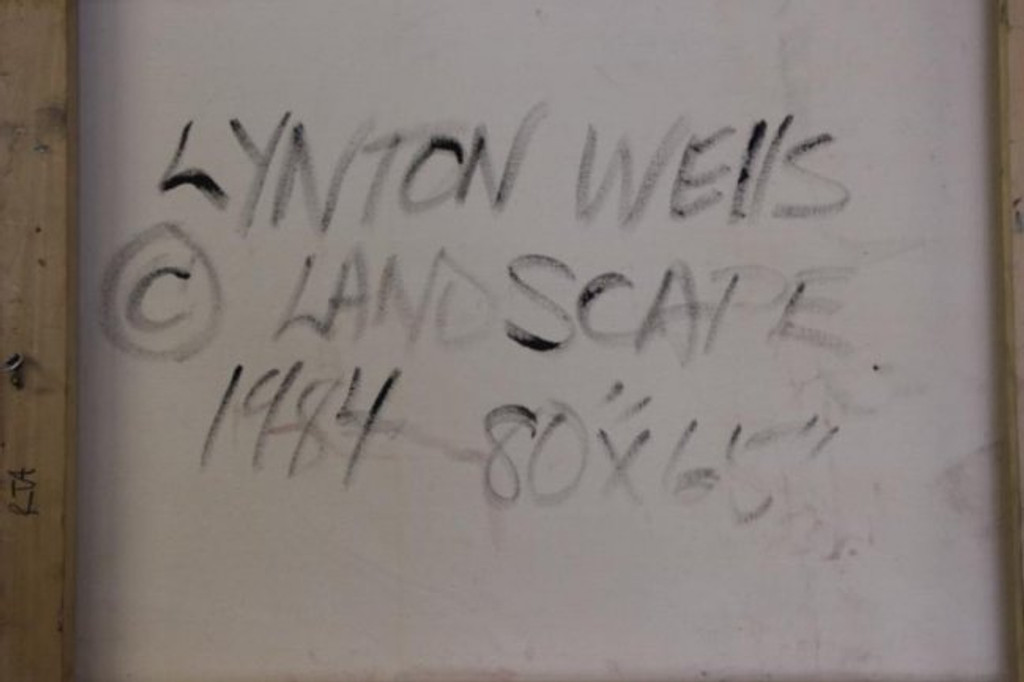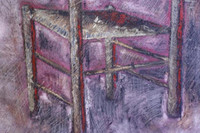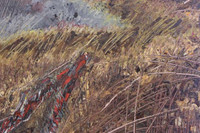
An Educated Collector is Our Best Client
In business for nearly two decades, we are a well established, popular contemporary art boutique specializing in expertly chosen, blue chip prints, multiples, uniques, books, ephemera and merchandise at different price points, with a focus on the secondary market. Please click on the "Contact Us" button at the bottom of this page for questions about any work, pricing and/or to arrange to visit our showroom/gallery - located in between Manhattan's Flatiron and Chelsea Flower Districts.
Lynton Wells, Oil on Canvas Painting, 1984, Signed, Copyright with Sable-Castelli Gallery Label
CONTACT GALLERY FOR PRICE
Description
LYNTON WELLS: THE SECRETS OF ORNAMENT
Dave Hickey
There are very few best-kept secrets in the realm of contemporary art. A culture fueled by gossip and adjudicated by journalism militates against it, but secrets do exist, simply because the gossips and journalists who chronicle the passing fashions—who are, in fact, witnesses to art and constructors of value—conceive themselves as witnesses to and constructors of history. Thus, in periods like our own, when the ambient idea of history is institutionally adrift and undergoing one of its periodic reconstructions, secrets get kept, and the paintings of Lynton Wells are cases in point: best-kept secrets, and open secrets, too, since nearly everyone knows and admires Wells’ paintings without knowing exactly what to say about them.
The problem is this: Within the broad field of practice and concern that constitutes the purview of Western art, Wells’ paintings propose themselves with passion and authority. Within the imaginary history that informs our present idea of art’s progression, however, the paintings seem, almost willfully, to resist explanation, simply because they draw their resources from practices and attitudes that have been comfortably forgotten, and look forward to a future yet to be conceived. This, of course, is not an unusual situation in the history of art. What is unusual is our recent reluctance to greet works of art that elude our canons of description with enthusiasm—to confront and examine such works in hopes of expanding the field of artistic possibility. Art history, today, is defined within an ever-narrowing range of promise and precedent. We want what we expect, and, expecting to find what we want we do.
Simply construed, painting in the moment is seen as awaking from its long conceptual sleep, looking back to a bravura, expressionist past and looking forward to a thoughtfully designed and willfully decorative future. Wells’ paintings, however, for all their bravura execution and thoughtful design, are neither expressionist nor decorative in tone or temper. The expressive mark of paint applied by the loaded brush in the artist’s hand—the mark, that, in tribal colloquy of the New York art world, defines real painting—is nowhere present in Wells’ paintings. It has been willfully abolished and replaced by scattered, raw pigment and physical drawing, writing and scoring. The conceptual associations of wells ecriture, however, are suppressed as well by the sheer gestural elegance of his writing, while the decorative function of raw pigment and handsome gesture is mitigated by the devotion of the paintings to their subject.
The presumption of expressive art, of course, is that the work is somehow expressive of the artist as a creature in the world. The presumption of conceptual art is that the object represents and refers us to some absent, intellectual signified. The presumption of decorative art is that art somehow enhances the paintings’ setting in the world. Contrary to all these presumptions, Wells’ paintings elaborate the celebrate what is—what exists in the world on their won terms. They assert their autonomy by distancing themselves from the artist who made them, from the ideas that inform them and the spaces where they live. All their expressive energy, intellectual acuity and celebratory elaboration is focused on the subject of the painting itself as an object of devotion worthy of ornament. This is the agenda of Renaissance frescos, Gothic cathedrals, and impressionist paintings. It is an old agenda that has lost none of its relevance. We have simply forgotten the words we once used to talk about it.
Published on the occasion of exhibitions of recent paintings and works on paper at the Rebecca Ibel Gallery and Post Gallery, March 1 – April 14, 2001
















